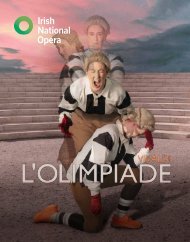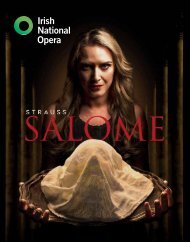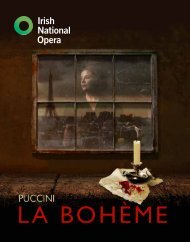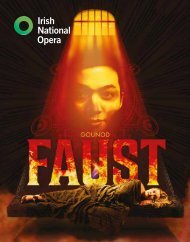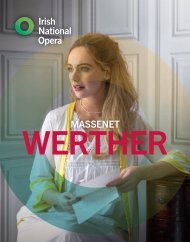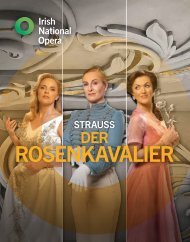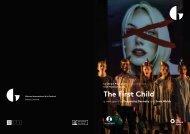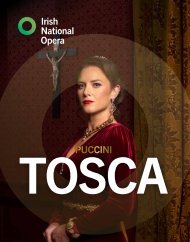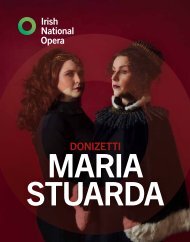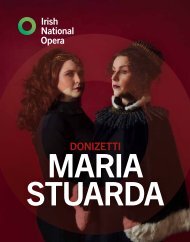Cosí fan tutte programme book 2023
Irish National Opera
Irish National Opera
Create successful ePaper yourself
Turn your PDF publications into a flip-book with our unique Google optimized e-Paper software.
I was interested in the idea that the girls undergo a process of self-liberation as they begin to take<br />
joy in renouncing the values of their past lives, and choose new lovers. This made me wonder what<br />
other changes the two women could experience. We have located the action in an Anglo-Irish<br />
stately pile in the 1910s. We are riffing off this period, and using its rich palette to elaborate the<br />
story. This pre-revolutionary Ireland, as Roy Foster describes so eloquently in his <strong>book</strong> Vivid Faces,<br />
posited so many visions of the future as part of the burgeoning debate for nationhood. Feminism,<br />
socialism, romanticism, Bolshevism are just some of the ideas which intersected in the zeitgeist of<br />
the era. This situation has allowed us to push the comedy of the piece.<br />
What if two dimwitted, landed West Britons seriously underestimated their fiancées? What if they<br />
stupidly assumed the characters of two far more interesting men – Dion Boucicault-inspired artistes<br />
(based on the “O’Kalem” company, who were making early silent films in Ireland at this time) – to<br />
test the fidelity of their lovers? What if, in leaving their two girlfriends free to think for themselves, the<br />
girls tune into and absorb the possibilities of the socio-political movements of the time? What if these<br />
two upper middle-class ingénues not only discover a new emotional identity in their new-found desire<br />
with their new boyfriends, but also a new-found intellectual and social mojo? What if, by the end of the<br />
opera, these girls become Constance Markievicz-inspired political radicals?<br />
We have developed this theme of the Anglo-Irish stately pile as a kind of constructed container<br />
for the two cloistered, naive young women, and there’s a parallel between the house and<br />
the land which it is inhabiting, and their own bodies, which they initially try to lock away from<br />
society and turn into fortresses, before going on a journey of discovery. There’s a parallel<br />
between Nora in Ibsen’s A Doll’s House, and the transformation of Fiordiligi and Dorabella.<br />
The values which confine them at the start of the opera fall away as they listen to the forward<br />
thinking ideas of Despina, who we have loosely modelled on the radical trade unionist<br />
and feminist Louie Bennett. Despina encourages Fiordiligi and Dorabella to reframe their<br />
understanding of love. Once they start rethinking that idea for themselves, the floodgates open,<br />
and all inherited assumptions about reality are up for debate, leading the two women to the<br />
question which must prompt all revolutions: does reality have to be like this?<br />
As Despina says to the girls in Act I “vi par, ma non è ver”, “it seems so but it is not true”. The O’Kalems<br />
are actually fakes, the constancy of a lover is as fragile as the autumn leaves, and the capability and<br />
agency of the two young women at the centre of the story, which is assumed by the men around them<br />
to be nil, only continues to grow as they discover new versions of themselves. Instead of Da Ponte’s<br />
tagline, I might suggest: All changed, changed utterly. A terrible beauty is born.<br />
11




